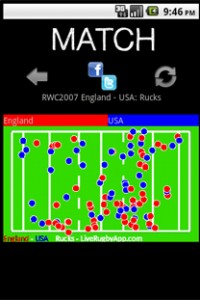I never thought hackdays could be so much fun that I would end up attending not just one but two in about ten days, getting flu in between. Oh, and that my team would end up winning the overall Best in show award over 27 other hacks and almost 100 people! Which is what this blog post is about…
First of all: credit where credit is due
The folks from Rewired State deserve a massive thank you for setting up such events, and for showing me that no matter the age and background of the people you work with there is room for great results bacause geeks more than often work well together, in teams, despite what stereotypes like to say.
ChaMPion: what is it?
The idea behind chaMPion is rather simple: you want to find MPs who care about what you care. Often their “declared interests” are not particularly meaningful or up to date, so we decided we would mine the content of their speeches.
ChaMPion is a tool that allows the user to enter a given topic and returns a list of MPs who have spoken about that topic, ranked by relevance.
How does it work?
In easy steps:
- we downloaded the extract of the Commons debates for all the sessions of Parliament since the first sitting in May 2010 following the General Election to the latest in November 2012
- we parsed these extract and aggregated the speeches by MP – as a result we obtained a map associating any given MP to all of his or her speeches
- for each MP we run an algorithm that calculates their keywords distribution; specifically we used Topia.Termextract which, given a text, determines its important terms and their strength
- we calculated a ratio for each word over the total of terms extracted for that MP and used this as a basis for our rank
- we built an API that searches by keyword and a captivating UI that displays the results graphically, together with other data for the MP and his or her constituency harvested from other sources.
Did you find anything interesting?
Yes! For example, if you search for phone the winner is Tom Watson; if you search for rape, it’s Caroline Flint.
Why didn’t you use X, Y, Z?
YES, you are right, this is not perfect, but it was meant to be just a quick hack that received much more interest than we were anticipating 🙂
For example, using Topia.Termextractor was not my first choice. For a semantic analysis of this kind a beautiful mathematical tool called Latent Dirichlet Allocation (LDA) is generally the natural choice. LDA runs a statistical analysis over a corpus of text, assuming that a document is about a collection of topics. It then returns the distribution of such topics. It’s not difficult to understand. For example, it might say that a speech by Tom Watson is 30% about phones, 30% about news and 40% about crime.
Unfortunately, I didn’t manage to find a library for LDA that worked on my laptop.
Will you keep developing it?
Given we received some pretty heart-warming feedback the answer is yes. For example, I’m going to try and find (or develop) an LDA library to have finally a proper topic model.
We also plan to introduce more statistics, possibly at a single MP level, and to try and work out a temporal component as well, in order to display how interests change over time. This might not make sense for all the MPs, as most of them will give a speech very rarely, but there is certainly a subset for which this analysis is meaningful.
Starting next week, the website will be updating with data from the coming sittings.
Code?
The code for this hack is all on my GitHub account. Feel free to download it, modify it, run your services on top of it. I’ll keep uploading changes and the most recent stable version will always be found running at http://www.champion.puntofisso.net. Feedback is also very welcome, but beware that the code is very dirty until I manage to tidy it up a little. Requests for functionality are encouraged and will be considered 🙂
Another round of thanks
To wrap up, I gave Mark the input of “look there’s an interesting hackday” but I will never thank him enough for actually taking me seriously, setting up one of the best teams ever, and facilitating our conversations and work. Lewis has been a great partner in crime, giving his best on a simple but effective UI which has certainly been überimportant in conveying our idea and let us win.
Sharon has provided invaluable knowledge of the works of the Parliament and some incredibly good mock-ups of the final interface, while Hadley has helped with a great understanding of the datasets.
Together with our chats with Glyn, Sheila and Brett, we had some good fun discussing ideas and saving ourselves the burden of having to go through a set of certainly wrong hacks during the day.
A big recommendation: Cards Against Humanity is the best team-building tool ever conceived.
